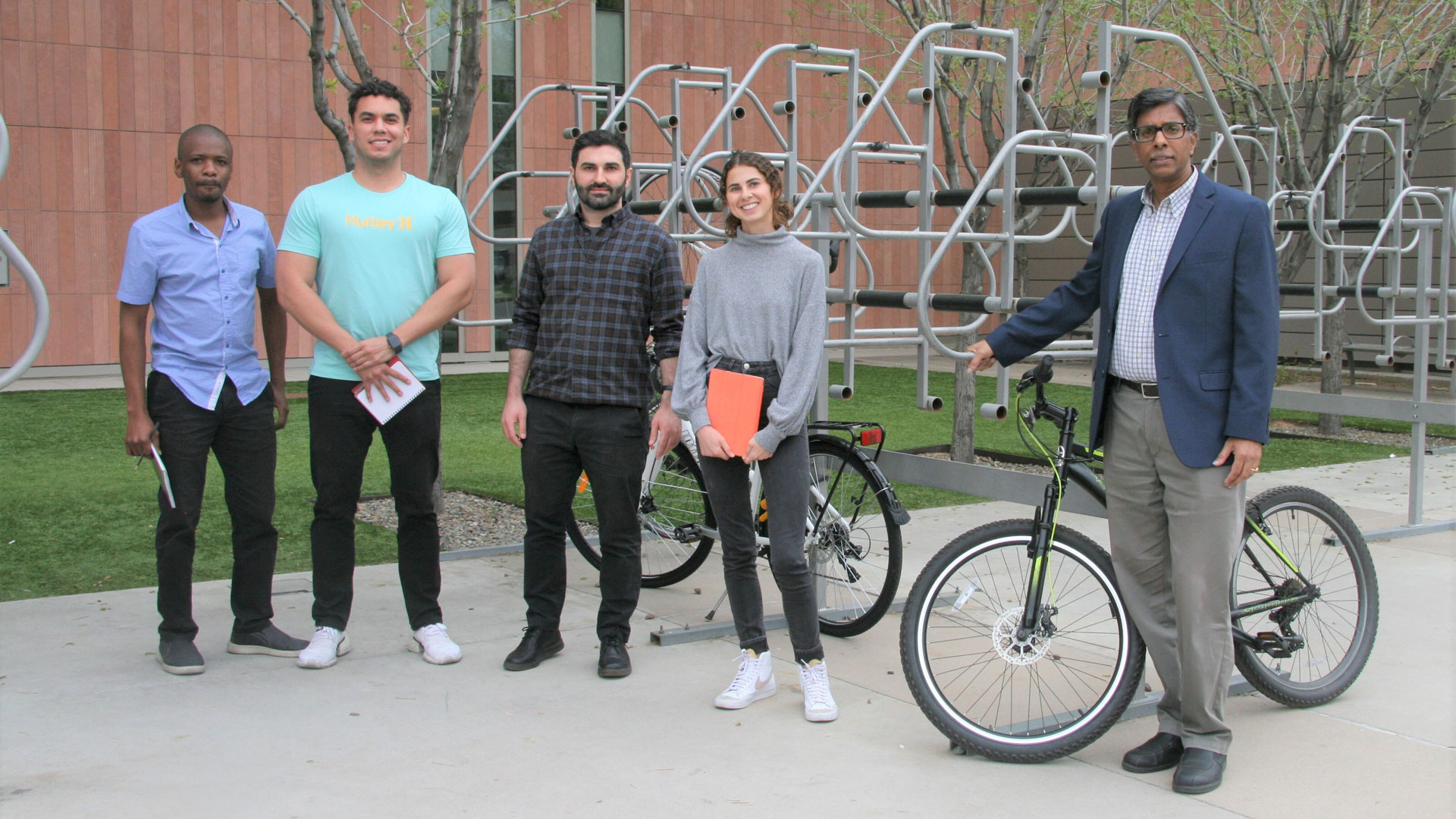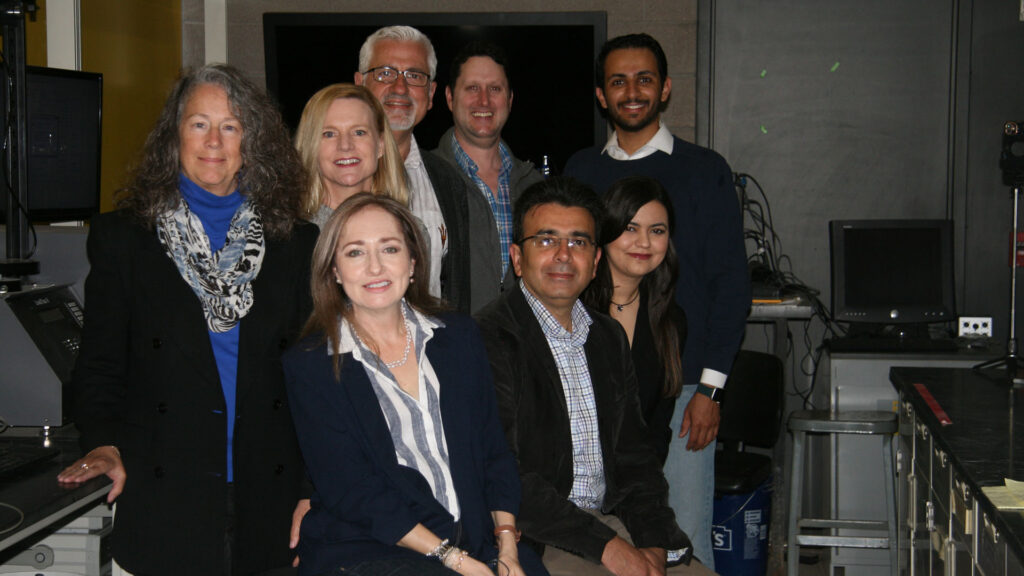
Designing next-generation transportation systems
Leading roles in two new national University Transportation Centers will provide ASU researchers platform to advance smart, sustainable and socially responsible transportation systems of tomorrow

Arizona State University engineering faculty members are at the forefront of efforts to develop interdisciplinary solutions to mounting and wide-ranging U.S. transportation challenges.
Through the support and directives of the federal government’s Bipartisan Infrastructure Law, or BIL, the U.S. Department of Transportation has approved the establishment of five new national University Transportation Centers, or UTCs, each with its own specific research priority theme. ASU is a part of the consortiums of university and college researchers in two of the awarded centers.
Understanding and planning for new mobility futures
The National Center for Understanding Future Travel Behavior and Demand is dedicated to improving the mobility of both people and goods. The new $40 million center is led by the University of Texas at Austin. Along with ASU, other consortium members include researchers at California State Polytechnic University Pomona, City College of New York, Diné College in the Navajo Nation, Georgia Institute of Technology, the University of Michigan and the University of Washington.
Professor Ram Pendyala, director of the School of Sustainable Engineering and the Built Environment, part of ASU’s Ira A. Fulton Schools of Engineering, is the center’s principal investigator at ASU. Pendyala’s long-time collaborator, Professor Chandra Bhat, serves as the principal investigator for the consortium at the University of Texas at Austin.
Pendyala also directs Teaching Old Models New Tricks, or TOMNET, a University Transportation Center sponsored and established by the U.S. Department of Transportation in 2016 under the Fixing America’s Surface Transportation Act.
Pendyala is an expert in transport modeling and simulation, travel behavior analysis and multimodal transport systems design. He is internationally recognized for his work in forecasting freight and passenger travel demand, understanding human activity-mobility patterns and advancing sustainable transportation pathways.
Transportation transformation through novel technology, materials and design solutions
Claudia Zapata, an associate professor in the School of Sustainable Engineering and the Built Environment, is the principal investigator at ASU for the new National Center for Infrastructure Transformation. The center’s activities will be dedicated to improving the durability and extending the life span of transportation infrastructure.
Zapata is currently deputy director of the National Science Foundation Center for Bio-mediated and Bio-inspired Geotechnics, or CBBG. Her expertise is in geotechnical and geo-environmental engineering with a strong focus on transportation geotechnics and the assessment of the impacts of climate, soil conditions and other environmental factors on pavement performance and foundations.
Zapata will be associate director of the new national center led by Prairie View A&M University in Texas, along with colleagues from Blinn College in Texas, Michigan State University, Rutgers University, and Texas A&M University and its Transportation Institute.
She will also coordinate the center’s diversity, equity, inclusion and belonging program in collaboration with the new center’s director, Professor Judy A. Perkins at Prairie View A&M.
The work of the new transportation centers will extend beyond research to significantly advance education, workforce development and technology transfer, which will include providing opportunities that bring students from diverse and historically underrepresented backgrounds into the transportation profession.

Arizona State University researchers and others who will be contributing to the work of the new National Center for Infrastructure Transformation include: (sitting, left to right) Associate Professor Claudia Zapata, Associate Professor Hazan Ozer and Graduate Research Associate Jolina Karam, (standing left to right) Associate Teaching Professor of Leadership and Integrative Studies Jennifer Chandler, Research Associate Professor Jean Larson, Professor Kamil Kaloush, Research Assistant Professor Jose Medina, and graduate student Saleh Alothman. All have either direct roles in the geotechnical and pavement engineering programs in the School of Sustainable Engineering and the Built Environment, or have other academic or research affiliations within the school, which is part of the Ira A. Fulton Schools of Engineering at ASU. Photographer: Emmitt Duerson/ASU
The Bipartisan Infrastructure Law supports each new center and enables significant new investments in the nation’s aging infrastructure systems, including all modes of transportation. It provides billions of dollars over five years to fund a plethora of transportation improvements projects, including more than $400 million in grants distributed among 34 University Transportation Centers.
The goals of the awarded centers encompass reducing traffic congestion and promoting transportation safety, reducing transportation cybersecurity risks, improving the resilience of transportation infrastructure and enabling more efficient movement of people and freight.
The program also puts a strong emphasis on preservation of the environments that transportation systems and travel activity impact, as well as addressing the effects of the carbon footprint of various modes of transportation on climate.
Providing people-centric transport systems
The primary goal of the center Pendyala will help lead is to conduct research that re-examines and transforms the scientific framework for measuring, monitoring, modeling and managing traveler behavior and demand.
“The future of mobility is characterized by a high degree of uncertainty with dramatic changes in commuting and travel patterns brought about by the growth in work from home, online shopping and meal delivery services. Hence, there is a tremendous need for research to help inform transportation planning processes,” Pendyala says.
“The idea is to provide new insights to guide the design, development and operation of a people-centric, multimodal, intelligent transportation system that meets the needs of individuals, institutions and businesses for generations to come,” he says.
Using high-tech tools for infrastructure management
Zapata says the center she will help lead will seek to develop a “highly interdisciplinary, intermodal and multimodal research portfolio for infrastructure durability and resilience.”
That work focuses on developing ways to better design, build and maintain all modes of transportation infrastructure. That will include making advances in pavement durability and developing innovative and eco-friendly construction materials, along with intelligent construction methods and new ways to enhance environmental stewardship through recycling.
“The consortium also wants to investigate the use of machine learning, artificial intelligence, unmanned aerial vehicles and more for proactive infrastructure management,” Zapata says. “We also want to ingrain social equity, economics and environmental protection policies and processes into all of our work.”
Zapata and Pendyala will be engaging faculty members within and beyond the Fulton Schools in the centers’ endeavors.
Pendyala’s center will benefit from the expertise of Fulton Schools Research Professor Steven Polzin, a nationally recognized expert in mobility analysis and policy, and Associate Professor Xuesong Zhou, a leading researcher in transportation network modeling. Andrew Maynard, a professor in ASU’s School for the Future of Innovation in Society will also be heavily engaged in helping to imagine alternative transportation futures.
Zapata’s center will bring together School of Sustainable Engineering and the Built Environment faculty members and infrastructure researchers, including Associate Professor Hasan Ozer, Professor Narayanan Neithalath, and Professor Kamil Kaloush.
Each of them is an internationally recognized authority in the development of sustainable and durable infrastructure materials. They will help to bring industry and academia together to develop smart, technology-enabled infrastructure solutions that meet the demands of extreme environments.
In addition, Research Associate Professor Jean Larson, CBBG’s education director and an expert in transfer of knowledge and learning techniques, and Jennifer Chandler, an associate teaching professor and CBBG’s director of diversity and leadership, will join the technical group to ensure robust education, and diversity, equity and inclusion in all programs.
Transportation education is high priority
While Pendyala and Zapata say they are excited about the transdisciplinary research endeavors the two centers will enable, they also emphasize that educating students and developing the workforce of the future will be among the most rewarding aspects of the centers’ pursuits.
Their plans also include engaging dozens of undergraduate and graduate students in research and technology transfer activities and providing specialized experiences for middle school and high school students.
“We want to ensure we make a contribution to developing a 21st century workforce that is able to leverage technology for the greater good,” Pendyala says.
“Our strategy centers around creating an inclusive workplace culture in order to drive sustainable growth, productivity and innovation,” Zapata says.
An event being planned for the fall will kick off the two centers’ activities, formally mark the establishment of the new ASU Southwest Pavement Technology Consortium and celebrate a growing partnership with the International Road Federation, which is expected to bring approximately 800 participants to its conference at ASU’s Tempe campus in November.



































